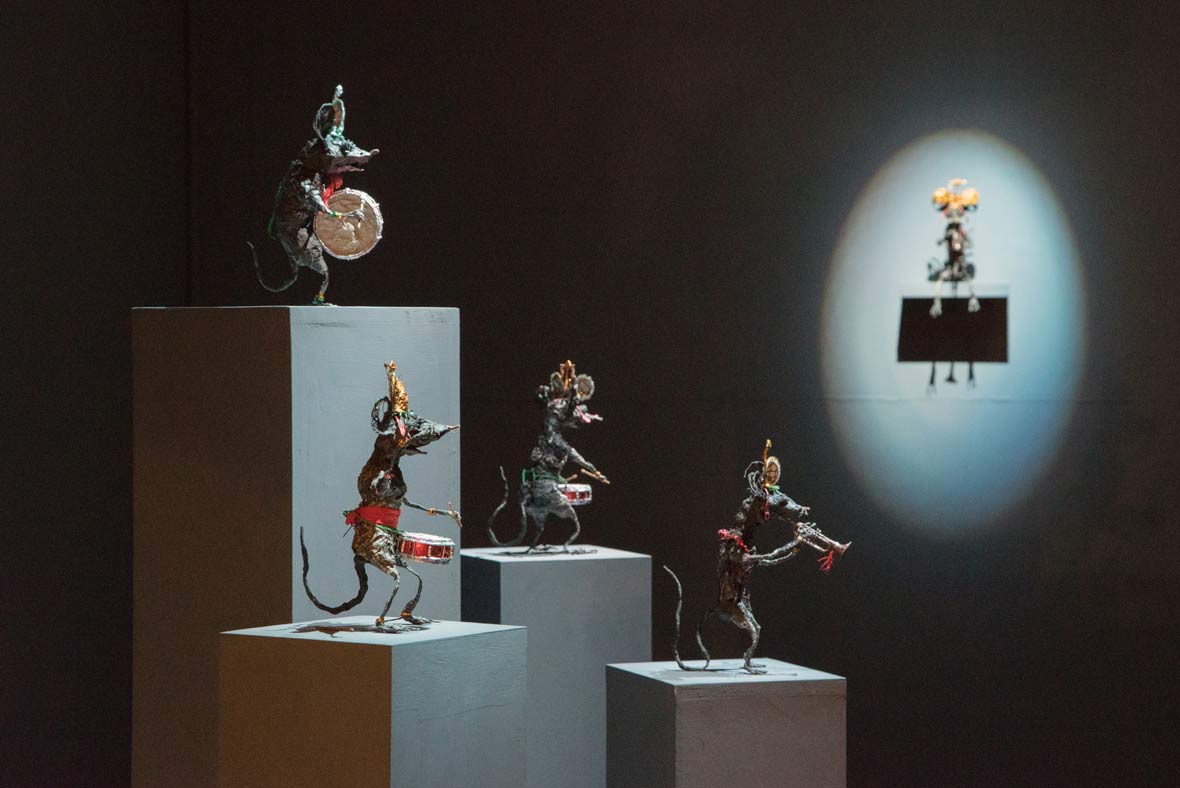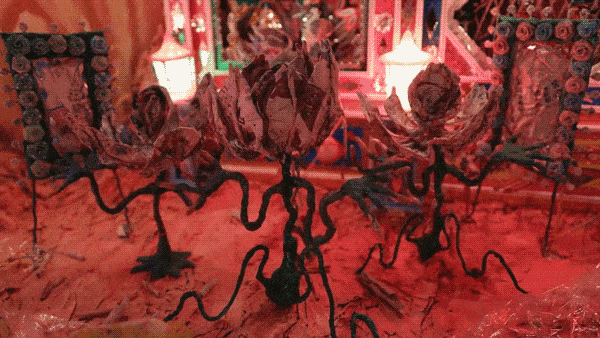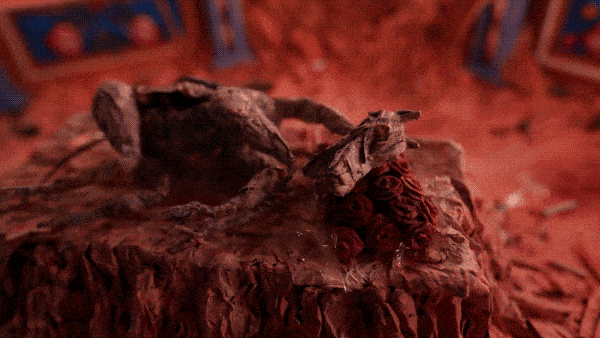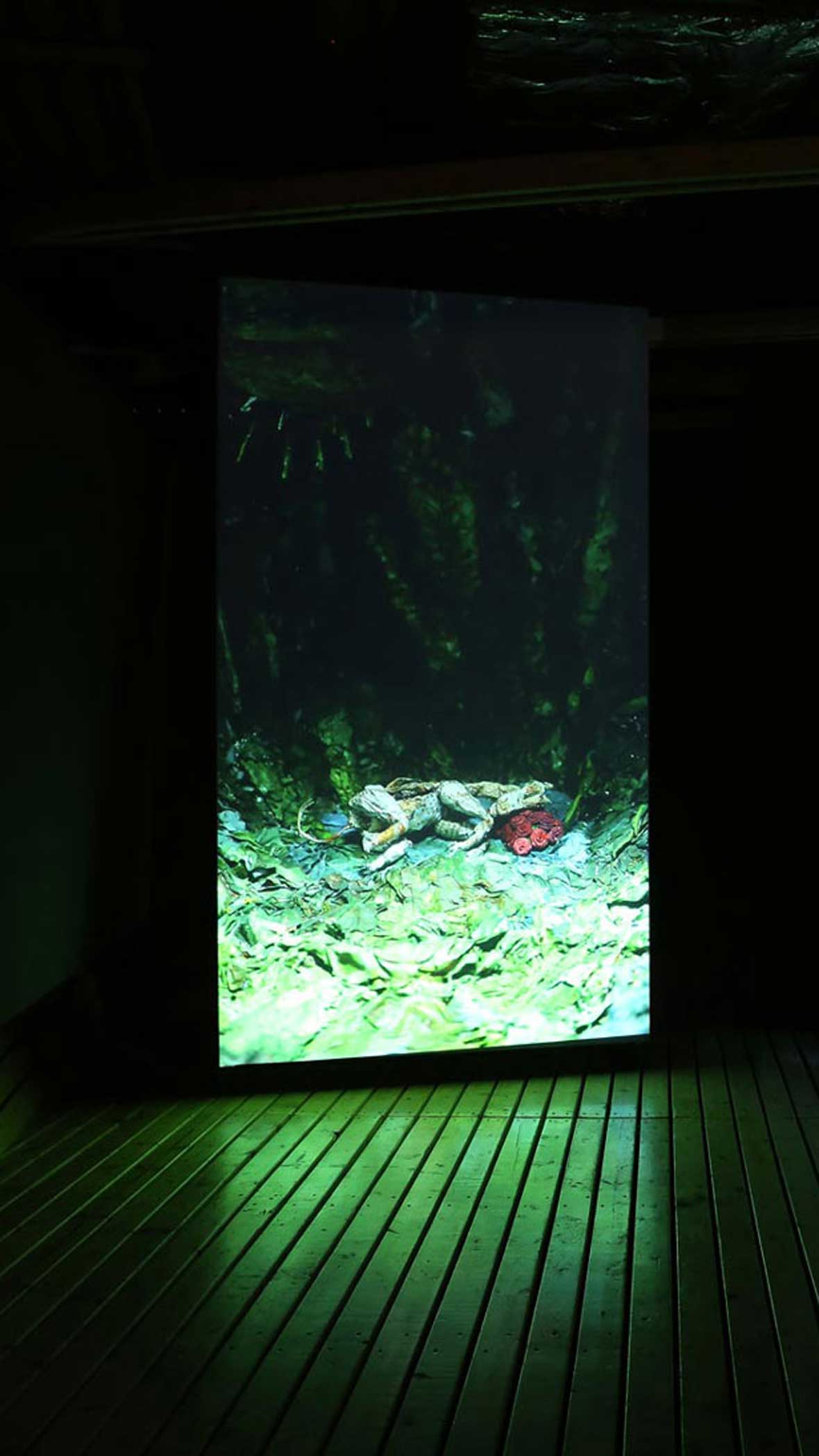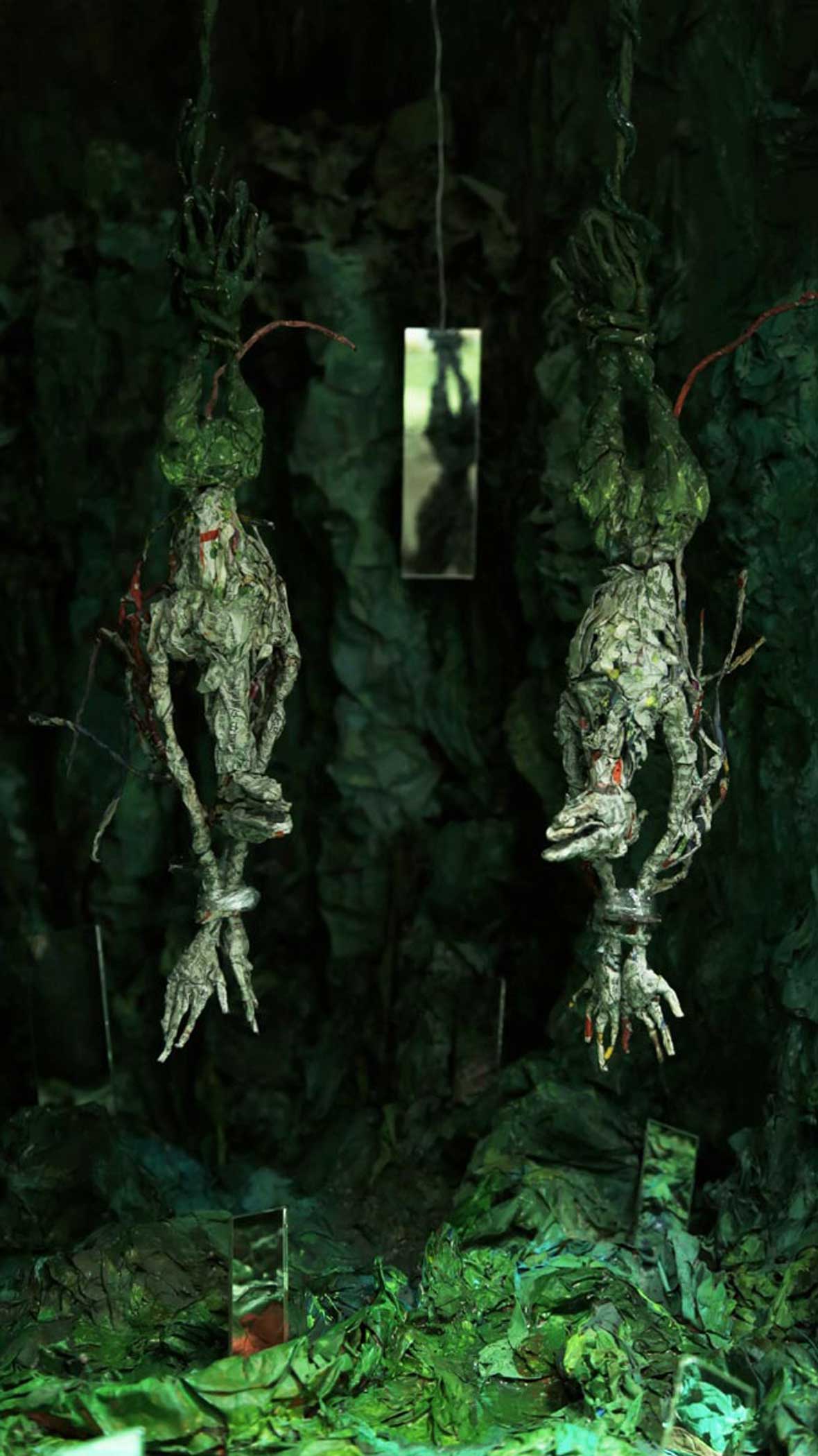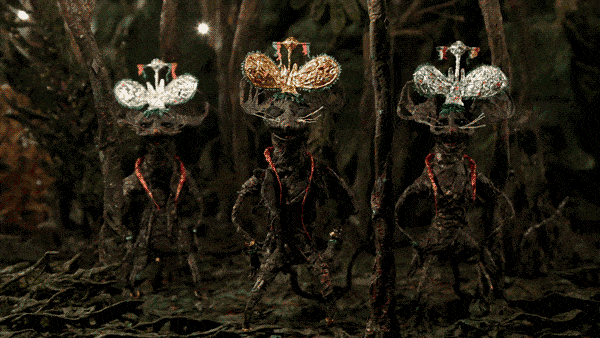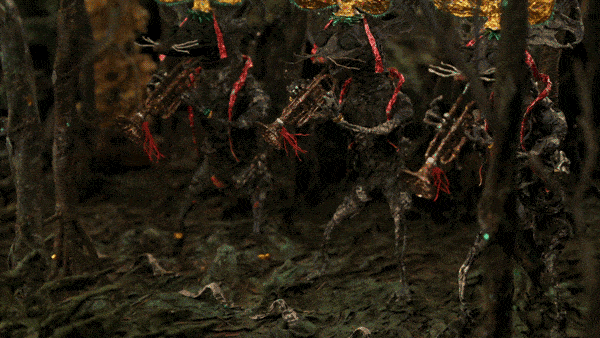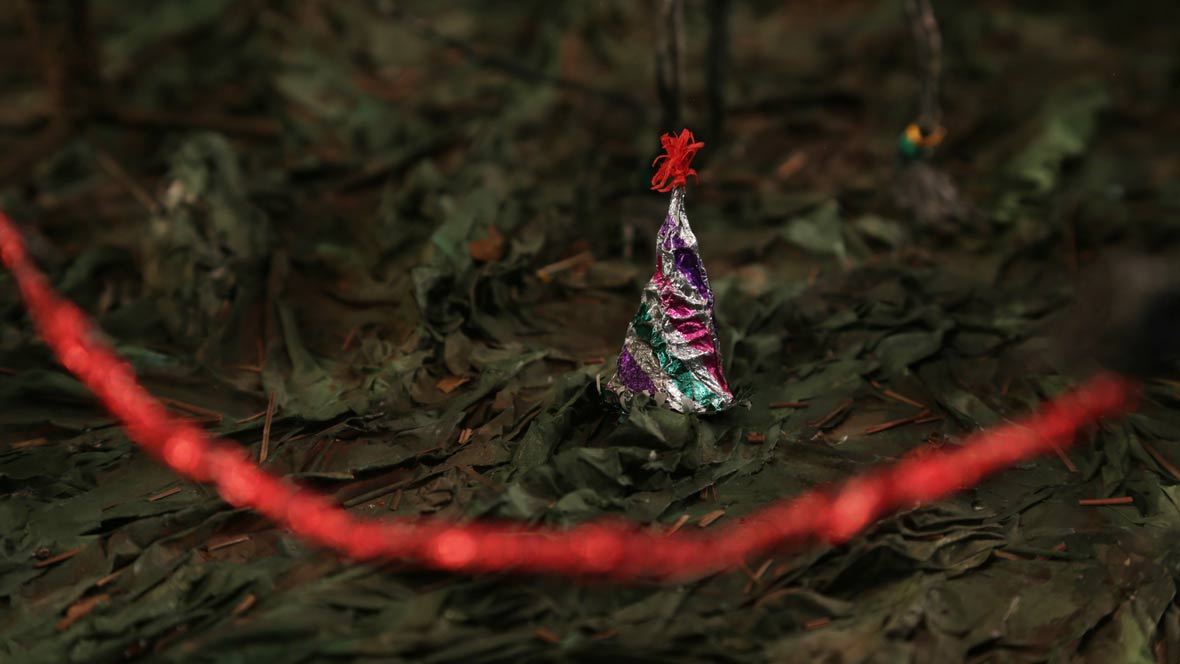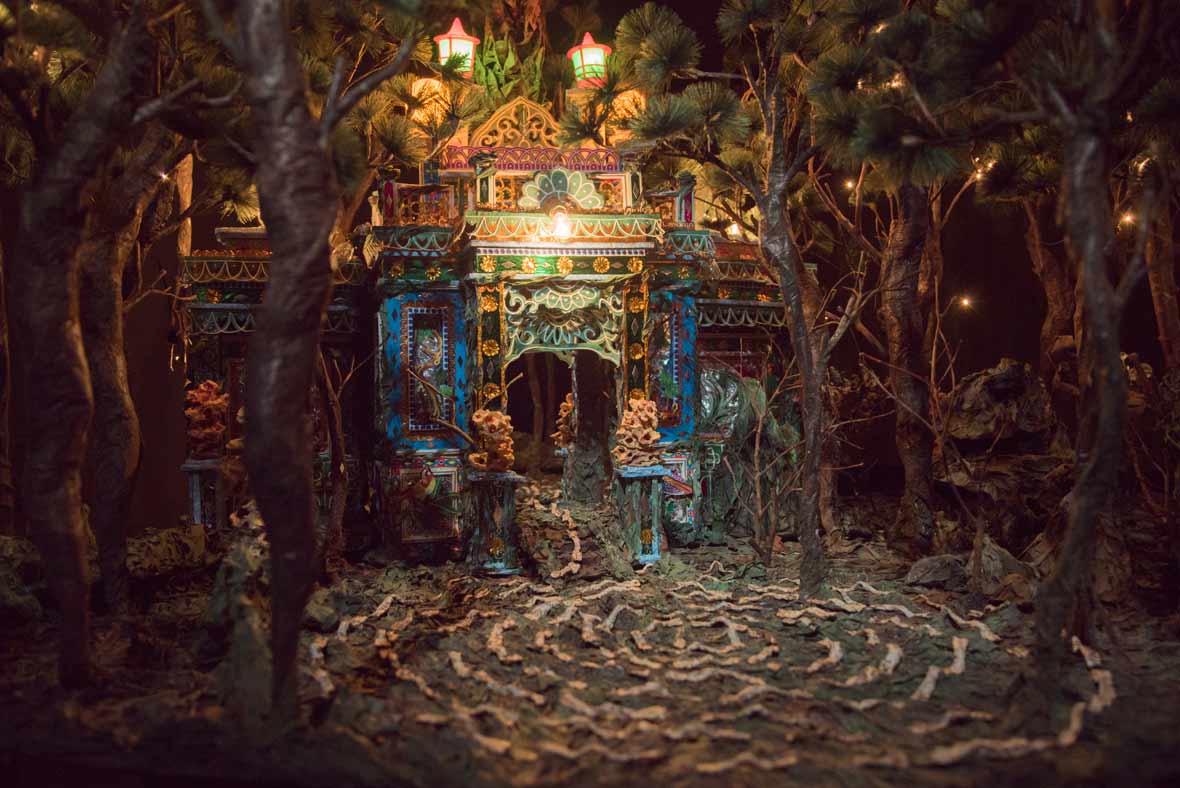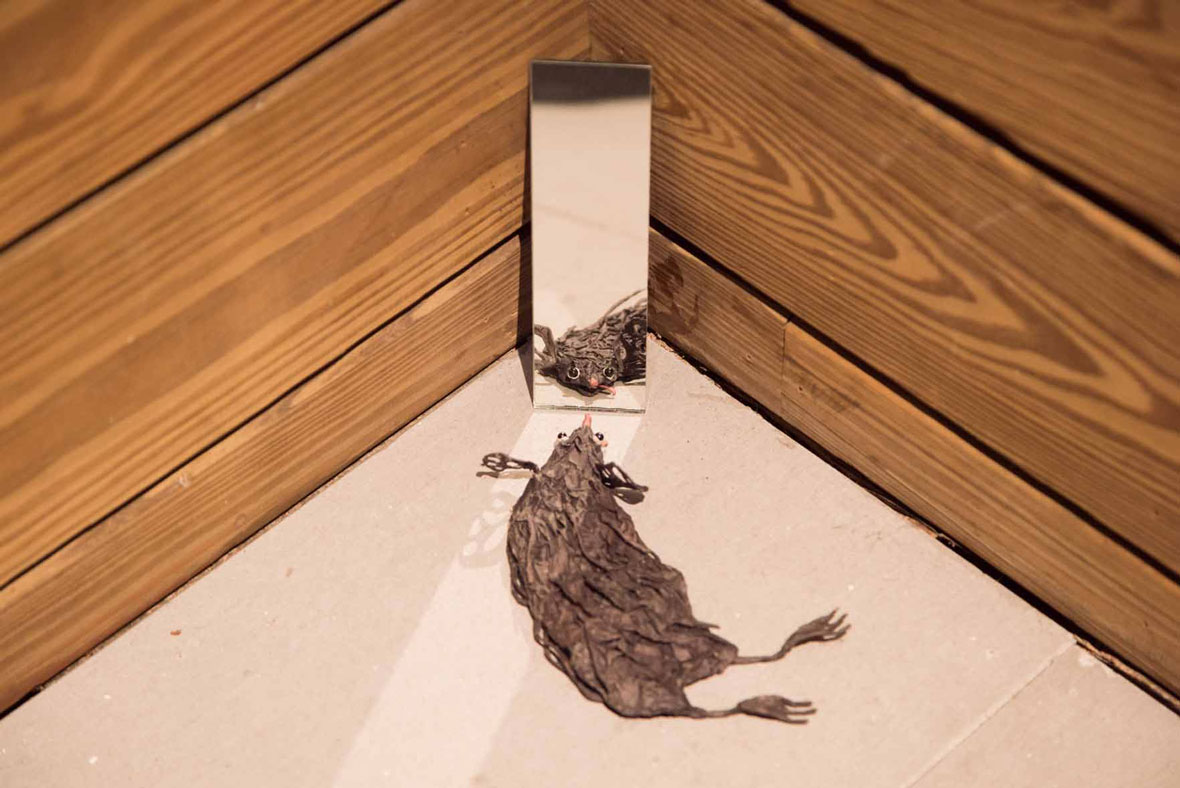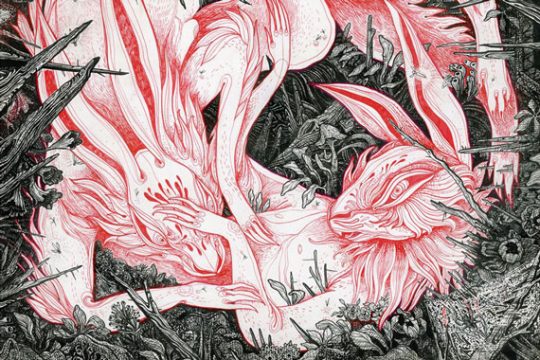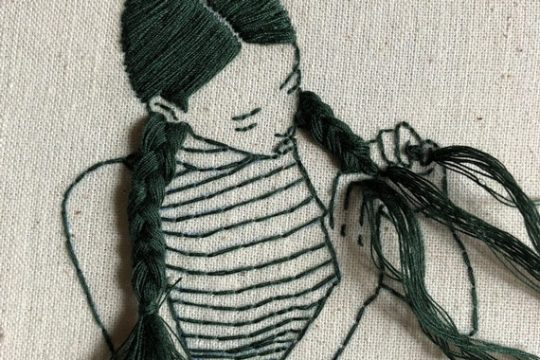
Zhizha is a traditional Chinese craft that uses paper to create funeral offerings that are meant to be burned and sent to the afterlife. Typically, these offerings are comprised of money, everyday items, and, at times, even houses. The belief is that these offerings can be received and used by the deceased.
With the changing times, the traditional craft of zhizha has slowly slipped into decline. However, Taiwanese visual artist Zhang Xuzhan‘s interest in zhizha art has conversely grown over time. In recent years, Zhang has repurposed this traditional craft for creating uncanny and grotesque-looking works of art. In his ongoing Hsin Hsin Joss Paper Store Series, Zhang begins each project by sculpting the characters using zhizha techniques. These characters are then implemented into animations, short films, or installation pieces to tell a larger story. Although the visual presentation is versatile, each piece of work share commonalities in their examination of the absurdities of society, contradicting ideals, the subversion of power, as well as life and death.
张徐展是来自台湾的艺术家,他的创作素材很怪诞,甚至有些灵异的成分在,他用纸扎人来创作。纸扎人是在中华传统的祭祀仪式里,透过燃烧寄送给逝者的小型纸製祭品,通常是一些生活所需,房子、日常用品、钱等等。这是一项随时间逐渐淘汰的传统技艺,现在还遵从这种习俗的人已经不太多了。
在他的系列作品《纸人展与新兴糊纸店系列》中,张徐展用纸扎技术来制作玩偶,再以动画、电影、空间装置等手法去呈现。大部份作品都是延伸自他在日常生活中观察到的现象——荒谬、矛盾、颠复、对于生与死的探索,这样的思辨经常出现在他的作品中。
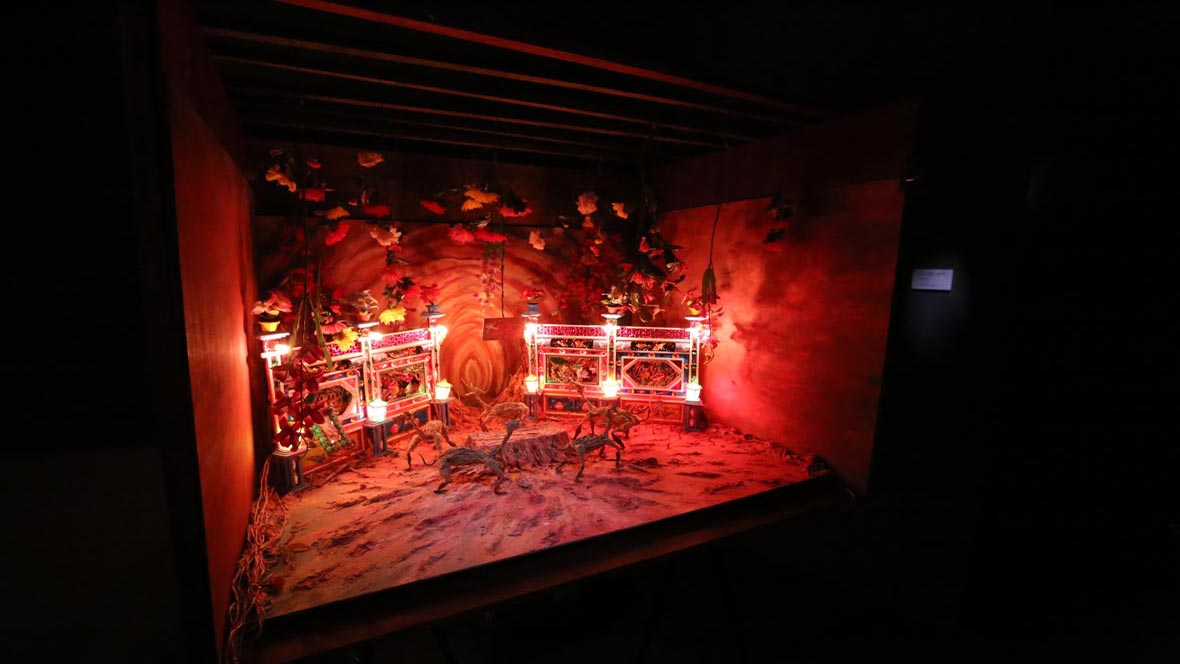
Zhang’s interest in zhizha can be traced back to his childhood. His family owns and operates Hsin Hsin Joss Paper Store, a century-old store that specializes in paper art funeral offerings. As such, Zhang grew up surrounded by miniature houses, doll effigies, and mythical creatures, all of which were made by paper and intended to be delivered to the underworld. “I’ve noticed that there’s a lot of superstition and misconceptions around zhizha creations,” he shares. “People consider them to be bad luck or creepy. But in my upbringing, I saw them as just products, a way for my family to make a living. Before they’re burned, they’re nothing but paper dolls. For me, I think what was much scarier than these zhizha effigies that lived alongside my family and I is seeing some of the stuff shown on television or in films. The undead monsters on Cantonese shows like Vampire Expert were much more terrifying to me as a child.”
之所以选用这种题材创作,是因为他的家庭背景。张徐展出生在台湾一间有百年历史的纸扎手艺商店—新兴煳纸店(Hsin Hsin Joss Paper Store),从小和这些灵厝、纸娃、神兽生活在一起。“我发现华人对纸扎文化多半有些刻板印象和迷思,会觉得恐怖或不吉利,但在我的成长经验里祂们只是谋生的商品,在出发之前都是没有功能的纸偶。反倒是港片里的道长林正英在杀殭尸时,影视媒体塑造的形象,比放在家里一起吃饭的纸扎人还要可怕。”
The fourth and latest addition to Zhang’s Hsin Hsin Joss Paper Store Series is Room 004 – Si So Mi, a stop-motion film based on his personal experiences and observations. “There’s an outdoor market near my studio,” he shares. “There, I’d see a lot of dead critters. They might have just been out looking for a bite to eat when they were squished by a car. Tons of people will pass by and not bat an eye. While the creature’s life is over, its physical body remains. It almost feels like it’s openly displaying its death as it waits to ‘log out’ of life.”
在第四号新作《灵灵肆 – Si So Mi》里,角色设定和情节都改编自張徐展的亲身经历。“工作室附近是菜市场,常有很多乾匾的小动物尸体,牠们可能只是出门吃个东西就被压扁了。在马路边没人处理,也不是很起眼,状态很像生命已经结束,但身体留在原地——似乎在晒自己的死亡,等着从生命‘登出’。”
Room 004 – Si So Mi features a group of paper rodents as the starring characters. Zhang’s inspiration to tell a story about rats comes from a childhood memory, or more specifically, his first encounter with death. “It’s a vivid memory that takes place on a sunny afternoon,” he tells us. “I saw a caged rat half submerged in a near-full bucket of water, fighting for its life.”
Recalling the incident, Zhang says this struggle for life almost seemed like a dance to him at the time, especially against the backdrop of the illuminated water. The water formed a stage and the battle to stay alive almost looked choreographed – it felt like a performance playing out in front of him. While morbid, this left a deep impression on him as a child. It was only after he grew up that he began to fully understand the event and the implications of death.
主角之所以是纸煳老鼠,灵感来自于他小时候一次目睹死亡的记忆。“ 一个晴朗的午后,阳光洒落在一个水大约九分满的水桶,裡面浸有一隻不断想逃脱的老鼠。”他回忆起,那隻老鼠挣扎的样子就像在跳一支怪异的舞蹈,背景是水被阳光反射的闪烁,有舞台,有动作,像一齣小小的舞台剧。当下年幼的他不觉得这和死亡有什么关联,长大后回想起来才明白,这一刻原来离死亡有多么接近。
Room 004 – Si So Mi takes this memory and reimagines it into a bizarre stop-motion film. It’s surreal, yet very much rooted in reality. In the short film, the rats are wearing party hats and singing the German folk song “Ach, wie ist’s möglich dann.” This song, in Taiwanese folk culture, can often be heard at funerals. In turn, the first three notes of the song, ‘si-so-mi,’ has become closely associated with death in Taiwan. It’s an amusing juxtaposition with the song’s earlier appearances in German love films. The accompanying choreography of the zhizha rodents is Zhang’s way of paying tribute to the moments of life that are often overlooked. The joyful singing both celebrates and mourns the passing of life. It’s a ceremonious performance that commemorates the separation of flesh and soul. Room 004 – Si So Mi serves as a reminder that death doesn’t necessarily need to be associated with sadness, but rather, it should be acknowledged as just a changing of one state to another.
他把这样的回忆重现在作品里,像幻境,却又与现实紧密相连。老鼠带着派对帽子,唱的曲子是 Si So Mi(西索米),原型是一首常用在文艺爱情电影的德国诗歌《Ach, wie ist’s möglich dann》,传入台湾后却成了葬仪乐队用的送葬曲,其中意义的转变形成有趣的对比。这支编舞是张徐展用想像在回应这些总在发生、却没人发现的生活现场,牠们以欢快的姿态奏乐,用歌舞庆祝死亡的到来,带点哀愁与倔将的与逝去的生命对质。进行一场灵魂与肉身分离、亡者从人间登出的仪式。死亡有时也不必感伤,是换了个地方生活,是吧。
